Summary | Excerpt | Reviews | Beyond the book | Read-Alikes | Genres & Themes | Author Bio
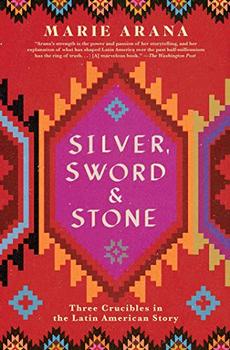
Critics' Opinion:
Readers' Opinion:
First Published:
Aug 2019, 496 pages
Paperback:
Aug 2020, 496 pages
 Book Reviewed by:
Book Reviewed by:
Rose Rankin
Buy This Book
Against the background of a thousand years of vivid history, acclaimed writer Marie Arana tells the timely and timeless stories of three contemporary Latin Americans whose lives represent three driving forces that have shaped the character of the region: exploitation (silver), violence (sword), and religion (stone).
Leonor Gonzales lives in a tiny community perched 18,000 feet above sea level in the Andean cordillera of Peru, the highest human habitation on earth. Like her late husband, she works the gold mines much as the Indians were forced to do at the time of the Spanish Conquest. Illiteracy, malnutrition, and disease reign as they did five hundred years ago. And now, just as then, a miner's survival depends on a vast global market whose fluctuations are controlled in faraway places.
Carlos Buergos is a Cuban who fought in the civil war in Angola and now lives in a quiet community outside New Orleans. He was among hundreds of criminals Cuba expelled to the US in 1980. His story echoes the violence that has coursed through the Americas since before Columbus to the crushing savagery of the Spanish Conquest, and from 19th- and 20th-century wars and revolutions to the military crackdowns that convulse Latin America to this day.
Xavier Albó is a Jesuit priest from Barcelona who emigrated to Bolivia, where he works among the indigenous people. He considers himself an Indian in head and heart and, for this, is well known in his adopted country. Although his aim is to learn rather than proselytize, he is an inheritor of a checkered past, where priests marched alongside conquistadors, converting the natives to Christianity, often forcibly, in the effort to win the New World. Ever since, the Catholic Church has played a central role in the political life of Latin America—sometimes for good, sometimes not.
In Silver, Sword, and Stone Marie Arana seamlessly weaves these stories with the history of the past millennium to explain three enduring themes that have defined Latin America since pre-Columbian times: the foreign greed for its mineral riches, an ingrained propensity to violence, and the abiding power of religion. What emerges is a vibrant portrait of a people whose lives are increasingly intertwined with our own.
CHAPTER 1
STILL SEEKING EL DORADO
Peru is a beggar sitting on a bench of gold.
—Old Peruvian adage
In the stinging cold just before dawn, Leonor Gonzáles leaves her stone hut on a glacial mountain peak in the Peruvian Andes to trudge up a path and scour rock spills for flecks of gold. Like generations before her, she has teetered under heavy bags of stone, pounded it with a crude hammer, ground it to gravel with her feet, crushed it to a fine sand. On rare, lucky days, she teases out infinitesimally small motes of gold by swirling the grit in a mercury solution. She is only forty-seven, but her teeth are gone. Her face is cooked by a relentless sun, parched by the freezing winds. Her hands are the color of cured meat, the fingers humped and gnarled. She is partially blind. But every day as the sun peeks over the icy promontory of Mount Ananea, she joins the women of La Rinconada, the highest human habitation in the world, to scale the steep escarpment that leads toward the ...
The multi-layered structure and depth of detail make the book as engrossing as it is informative, and while Arana avoids prescriptions for the future or current policy, her message is clear—exploitation, violence and religion define Latin America, and for change to come, these legacies will require a reckoning that the world has been unprepared thus far to make...continued
Full Review
(973 words)
This review is available to non-members for a limited time. For full access,
become a member today.
(Reviewed by Rose Rankin).
 Candice Millard, author of Hero of the Empire
I have never before read a book of such astonishing breadth and intricate depth, capturing both the magnificent sweep of history and the gripping immediacy of journalism. The stories she tells will break your heart and blow your mind, but they will also give you a much clearer understanding of Latin America and a deep sense of wonder at the strength and resilience of its people
Candice Millard, author of Hero of the Empire
I have never before read a book of such astonishing breadth and intricate depth, capturing both the magnificent sweep of history and the gripping immediacy of journalism. The stories she tells will break your heart and blow your mind, but they will also give you a much clearer understanding of Latin America and a deep sense of wonder at the strength and resilience of its people John Hemming, author of The Conquest of the Incas
Like a condor soaring above the Andes, Marie Arana gives a sweeping overview of Latin American history. History is usually written by the winners, but this book throbs with passion for the victims and underdogs. It also celebrates the cultural triumphs, exuberance and generosity that make Latin America so lovable.
John Hemming, author of The Conquest of the Incas
Like a condor soaring above the Andes, Marie Arana gives a sweeping overview of Latin American history. History is usually written by the winners, but this book throbs with passion for the victims and underdogs. It also celebrates the cultural triumphs, exuberance and generosity that make Latin America so lovable. Jon Meacham, author of The Soul of America: The Battle for Our Better Angels
An elegant and incisive writer and observer, Marie Arana has given us a thoughtful and revealing portrait of the fabled—and too-little-understood—world of Latin America. Combining history with contemporary reportage, Silver, Sword & Stone is compelling reading.
Jon Meacham, author of The Soul of America: The Battle for Our Better Angels
An elegant and incisive writer and observer, Marie Arana has given us a thoughtful and revealing portrait of the fabled—and too-little-understood—world of Latin America. Combining history with contemporary reportage, Silver, Sword & Stone is compelling reading. Juan Gabriel Vásquez, author of The Sound of Things Falling
To trace the soul of a continent is an extraordinary feat, and Marie Arana does it with scholarly precision, moral thoroughness and elegance of style. For anyone interested in understanding—really understanding—what Latin America is and where it comes from, Silver, Sword and Stone has to be the first step.
Juan Gabriel Vásquez, author of The Sound of Things Falling
To trace the soul of a continent is an extraordinary feat, and Marie Arana does it with scholarly precision, moral thoroughness and elegance of style. For anyone interested in understanding—really understanding—what Latin America is and where it comes from, Silver, Sword and Stone has to be the first step. For Americans accustomed to the myth of Europeans settling largely empty lands, where Natives barely featured, it can be difficult to envision the New World as densely populated with Indigenous societies. But in Central and South America, before the arrival of European germs and conquistadors, that was precisely the situation—the Americas contained an estimated 40-140 million people at the turn of the 16th century when Columbus arrived.
For Americans accustomed to the myth of Europeans settling largely empty lands, where Natives barely featured, it can be difficult to envision the New World as densely populated with Indigenous societies. But in Central and South America, before the arrival of European germs and conquistadors, that was precisely the situation—the Americas contained an estimated 40-140 million people at the turn of the 16th century when Columbus arrived.
It's impossible to know the exact number, since the scale of deaths from 1492 onward was so vast and the colonizers didn't record the grisly toll. Devastating diseases that Indigenous peoples had no immunity to, such as smallpox, ravaged the entire continent. Those they didn't kill, the Spanish ...
This "beyond the book" feature is available to non-members for a limited time. Join today for full access.

If you liked Silver, Sword, and Stone, try these:
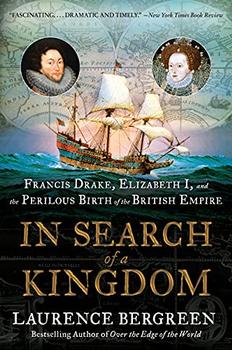
by Laurence Bergreen
Published 2022
In this grand and thrilling narrative, the acclaimed biographer of Magellan, Columbus, and Marco Polo brings alive the singular life and adventures of Sir Francis Drake, the pirate/explorer/admiral whose mastery of the seas during the reign of Queen Elizabeth I changed the course of history.
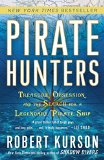
by Robert Kurson
Published 2016
Fast-paced and filled with suspense, fascinating characters, history, and adventure, Pirate Hunters is an unputdownable story that goes deep to discover truths and souls long believed lost.
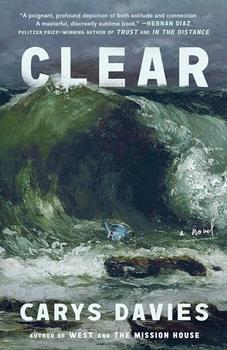
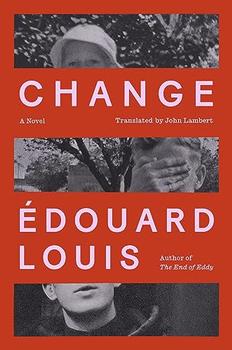
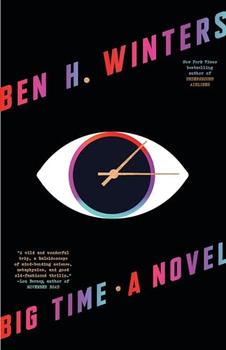

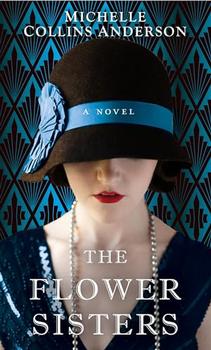
The Flower Sisters
by Michelle Collins Anderson
From the new Fannie Flagg of the Ozarks, a richly-woven story of family, forgiveness, and reinvention.
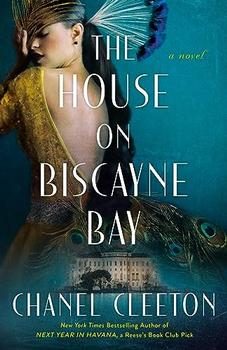
The House on Biscayne Bay
by Chanel Cleeton
As death stalks a gothic mansion in Miami, the lives of two women intertwine as the past and present collide.
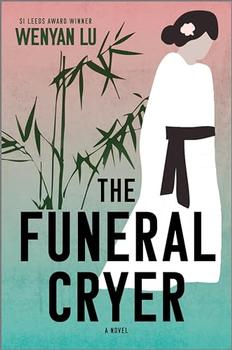
The Funeral Cryer by Wenyan Lu
Debut novelist Wenyan Lu brings us this witty yet profound story about one woman's midlife reawakening in contemporary rural China.
Your guide toexceptional books
BookBrowse seeks out and recommends the best in contemporary fiction and nonfiction—books that not only engage and entertain but also deepen our understanding of ourselves and the world around us.